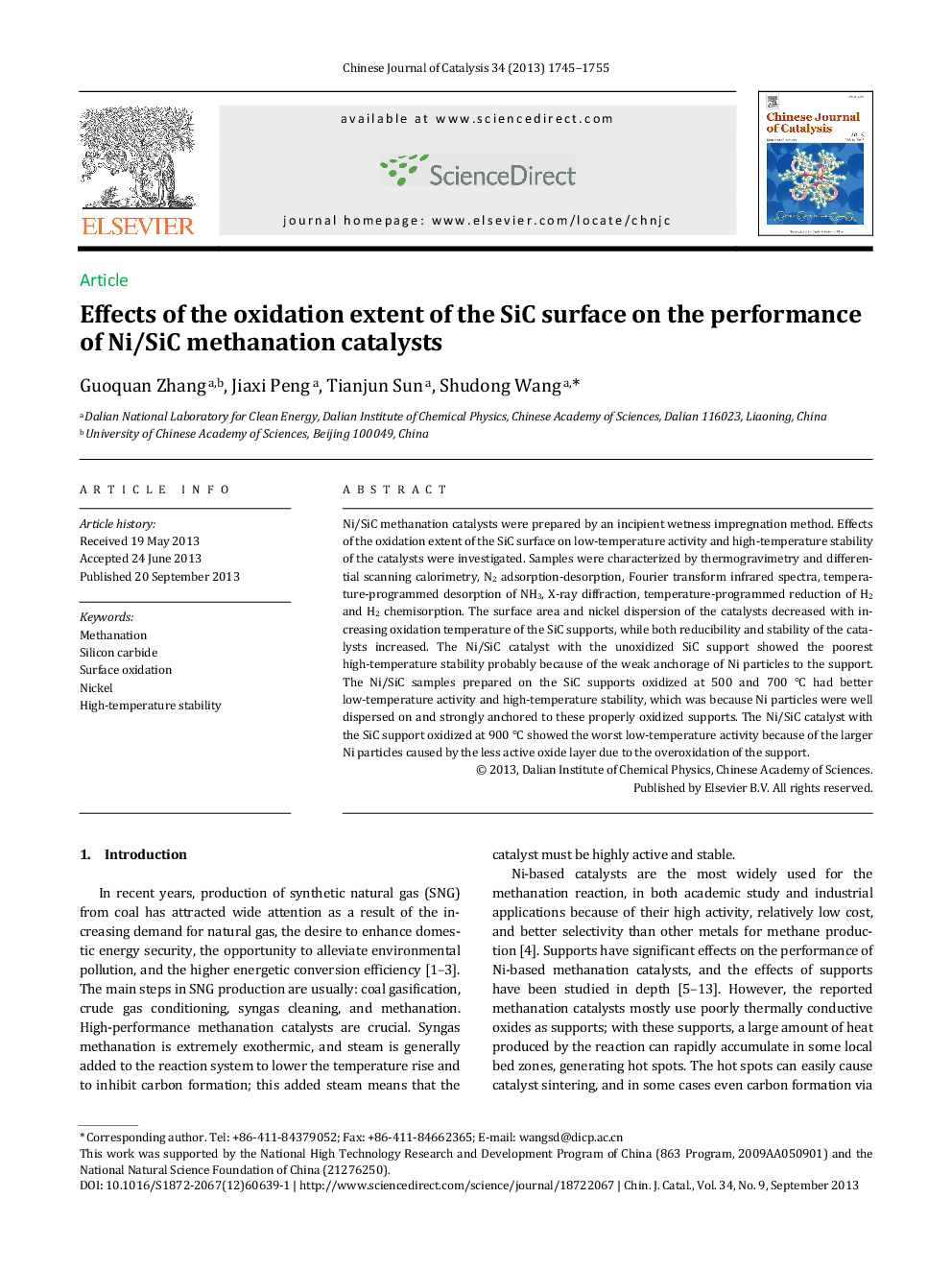| Article ID | Journal | Published Year | Pages | File Type |
|---|---|---|---|---|
| 59175 | Chinese Journal of Catalysis | 2013 | 11 Pages |
Ni/SiC methanation catalysts were prepared by an incipient wetness impregnation method. Effects of the oxidation extent of the SiC surface on low-temperature activity and high-temperature stability of the catalysts were investigated. Samples were characterized by thermogravimetry and differential scanning calorimetry, N2 adsorption-desorption, Fourier transform infrared spectra, temperature-programmed desorption of NH3, X-ray diffraction, temperature-programmed reduction of H2 and H2 chemisorption. The surface area and nickel dispersion of the catalysts decreased with increasing oxidation temperature of the SiC supports, while both reducibility and stability of the catalysts increased. The Ni/SiC catalyst with the unoxidized SiC support showed the poorest high-temperature stability probably because of the weak anchorage of Ni particles to the support. The Ni/SiC samples prepared on the SiC supports oxidized at 500 and 700 °C had better low-temperature activity and high-temperature stability, which was because Ni particles were well dispersed on and strongly anchored to these properly oxidized supports. The Ni/SiC catalyst with the SiC support oxidized at 900 °C showed the worst low-temperature activity because of the larger Ni particles caused by the less active oxide layer due to the overoxidation of the support.
Graphical AbstractProper oxidation of SiC can improve low-temperature activity and high-temperature stability of Ni/SiC catalysts by enhanced dispersal of Ni and better anchoring of Ni to the surface oxides.Figure optionsDownload full-size imageDownload as PowerPoint slide
